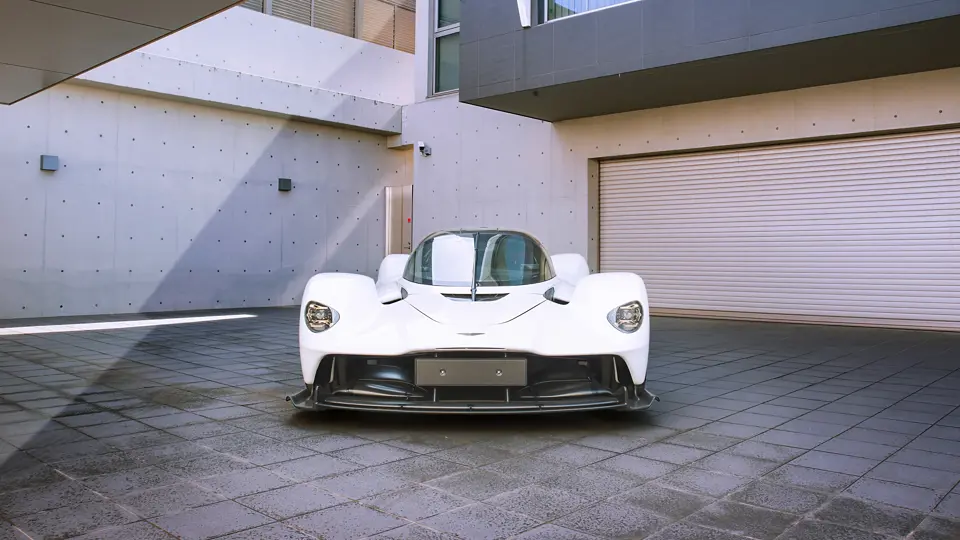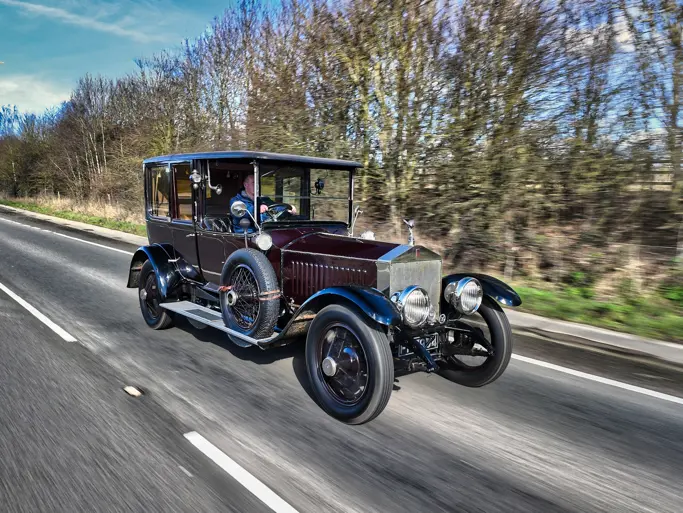
2022 Aston Martin Valkyrie Coupé
{{lr.item.text}}
$2,648,750 USD | Sold
{{bidding.lot.reserveStatusFormatted}}
- One of only 150 examples of Aston Martin’s ultimate Valkyrie road-legal hypercar
- Co-designed by multiple Formula 1 championship-winning designer Adrian Newey
- Exterior finished in Lunar White with a gloss carbon roof featuring red graphic strakes; Pure Black Deboss Alcantara interior complemented by Spicy Red stitching
- Powered by an electric motor-assisted Cosworth V-12 making 1,160 horsepower; capable of 0 to 100 km/h in 2.6 seconds and a claimed top speed exceeding 400 km/h
- Single ownership from new; displays only 109 kilometres at the time of cataloguing
- Offered with an Aston Martin Certificate of Conformity (available to view on file)
The original “Nebula” internal codename for what would eventually become the Valkyrie was entirely fitting. Aerospace-grade engineering runs throughout this fully carbon fibre, road-legal hypercar that is capable of single-seater levels of performance. The letters in “Nebula” also denoted the key stakeholders involved, with multiple Formula 1 World Championship-winning car designer Adrian Newey and the Red Bull Racing team working alongside Aston Martin as the marque dramatically pivoted away from the grand tourers with which it had long been most associated.
A seven-year gestation period for the Valkyrie (the final model name derived from Norse mythology) reflected the project’s immense complexity. Elegant bodywork, featuring the trademark Aston Martin wing-shaped front intake, does without unsightly aerodynamic devices. An emphasis was placed instead on the open underfloor that employs Venturi tunnels running either side of the teardrop-shaped cockpit to feed an enormous diffuser. For this attempt at creating a Grand Prix car for the streets, extreme management of the airflow allows the Valkyrie to achieve over 3.5-G through high-speed corners, approximately three times that of a conventional sports car. All told, it can generate a genuinely tyre-bursting two tonnes of downforce.
Under the skin, there’s no steel to be found in the structure of the car. To achieve the best power-to-weight ratio, carbon fibre dominates the chassis, of which the engine is a fully stressed member. Rather than conventional mounts that dampen the experience, the 65-degree, naturally aspirated, 6.5-litre V-12 is attached directly to the monocoque with four bolts. Created by Cosworth, who started on the project by developing a straight-three unit, the engine has a screaming rev limit of some 11,100 rpm. Fitted with an electric motor and a battery pack suppled by Rimac, the Valkyrie develops a total of 1,160 horsepower, which is sent to the rear wheels only via a Ricardo-manufactured seven-speed sequential transmission.
The attention-to-detail involved with realising the Valkyrie is simply staggering. On most Aston Martin models, the famous “Wings” badge is enamelled and proudly protrudes from the bonnet. Such an item was deemed too heavy and too disruptive to the airflow in this application but substituting it for a mere decal was deemed unsatisfactory. As such, this car is optioned with a special titanium badge just 40 microns thick. Quoted as being 99.4 per cent lighter than normal, the new symbol was then laid into the paint for a flush fit.
Further underlining the engineering boundaries being pushed throughout, Aston Martin says the rear brake light is the smallest and brightest ever fitted to a production car. What’s more, there are a reported 15,187 adjustable parameters across the Valkyrie. This ultimately led to the fitment of a hydraulics system with 17 different actuators borrowed from a Boeing Apache helicopter to keep pace with the active aerodynamics, double wishbone suspension, and damping.
Then there’s the single windscreen wiper. While it was initially thought that the model might do without, the potential for a car to one day be caught at a set of red lights in a downpour led Aston Martin to find a company that could provide a sleek unit that would not spoil the silhouette but would still clean the extremely curved windscreen. As a result, after a year of development on the wiper alone, the Valkyrie uses the same supplier as the Space Shuttle programme.
A truly astonishing feat of engineering, this 2022 model year example has been consigned to auction by its original owner. The Valkyrie’s odometer remarkably reads just 109 kilometres at the time of cataloguing.
Ordered new to Japan, factory records show that this left-hand-drive, European-specification car carries a 19 October 2022 build date. It was finished predominantly in Lunar White, with the exterior also featuring a gloss carbon roof panel and striking red graphic strakes. Red callipers for the enormous carbon-ceramic brakes nestle behind Satin Black Magnesium wheels, which are remarkably lighter than their accompanying tyres. In addition, almost £120,000 was spent on options, with this Valkyrie gaining a polished carbon engine plenum, Inconel exhaust system with black finishers, plus a gloss carbon engine cover.
As for the compact cockpit, a copy of the build sheet records that the racing-style seats were trimmed in Pure Black Deboss Alcantara complemented by Twill Satin Carbon Fibre for the roof inserts. To match the exterior accents, the optional six-point race harness and anodised switchgear were specified in red, while the stitching is listed as “Spicy Red”. This Valkyrie was sold new on 10 March 2023 ahead of a service being carried out on 24 November later that year, with the car then recorded at 84 kilometres. The car is offered with an Aston Martin Certificate of Conformity (available to view on file).
Given the very limited numbers in which the Valkyrie was produced, here is an incredible opportunity to purchase an as-new coupé example that would surely be among the crowning glories of any significant sports car or motorsport-inspired collection.








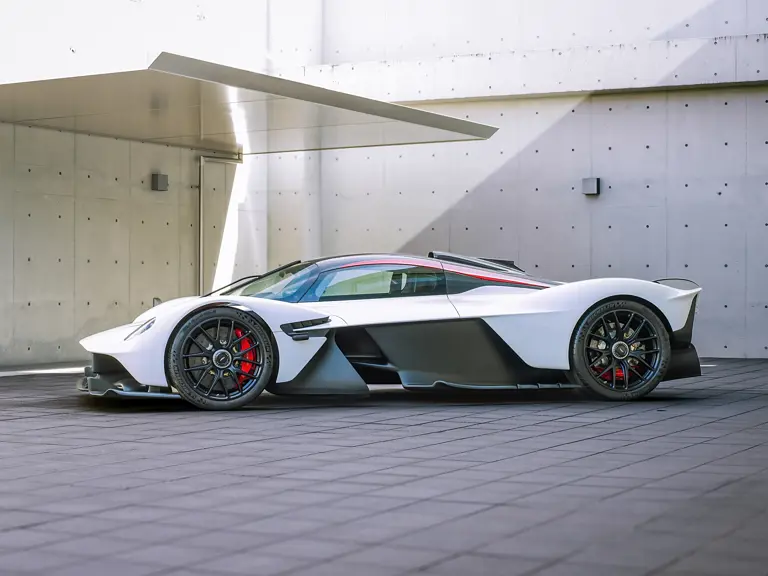





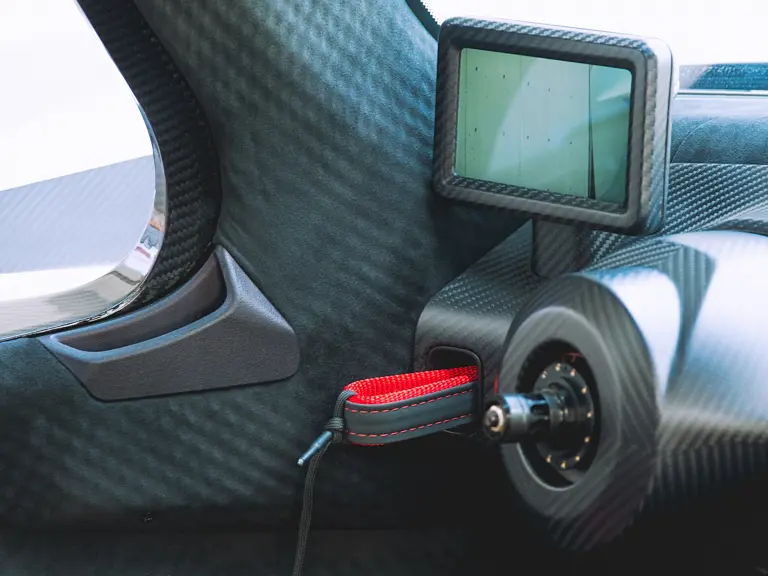


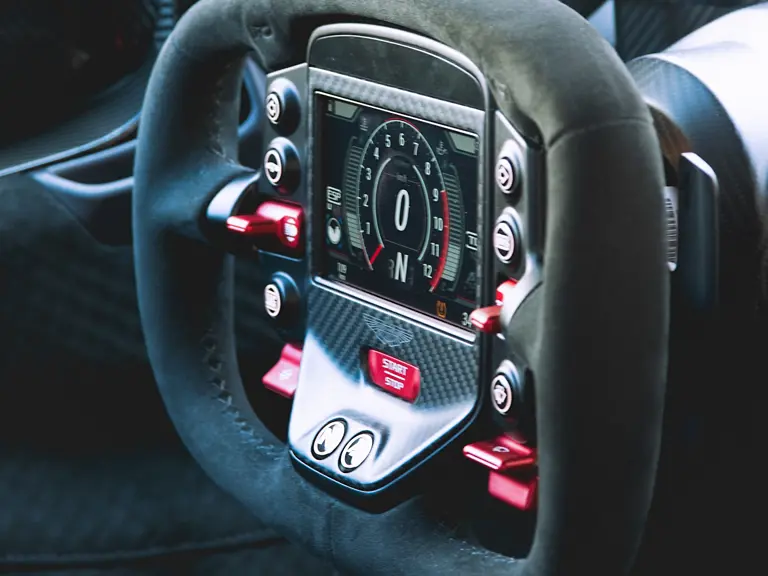

















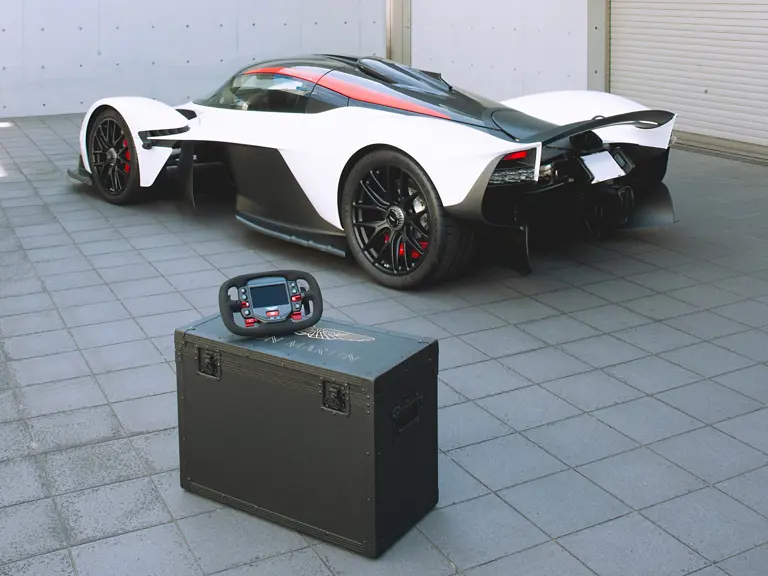

 | Dubai, United Arab Emirates
| Dubai, United Arab Emirates

